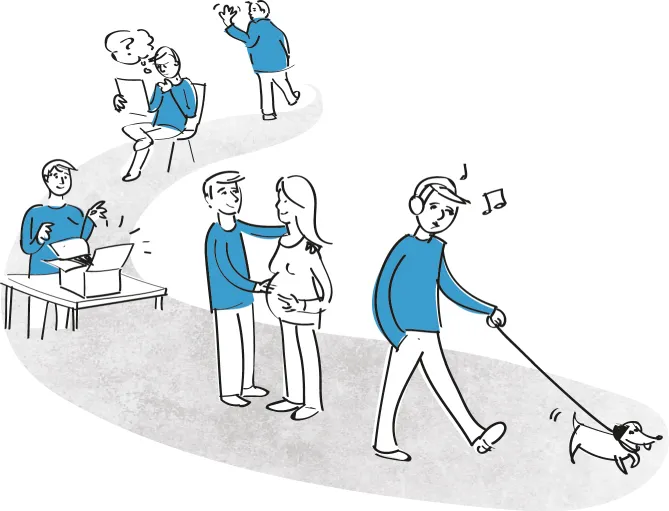
Service Design for Business
A Practical Guide to Optimizing the Customer Experience
Ben Reason, Lavrans Løvlie, Melvin Brand Flu
- English
- ePUB (handyfreundlich)
- Über iOS und Android verfügbar
Service Design for Business
A Practical Guide to Optimizing the Customer Experience
Ben Reason, Lavrans Løvlie, Melvin Brand Flu
Über dieses Buch
A practical approach to better customer experience through service design
Service Design for Business helps you transform your customer's experience and keep them engaged through the art of intentional service design. Written by the experts at Livework, this practical guide offers a tangible, effective approach for better responding to customers' needs and demands, and provides concrete strategy that can be implemented immediately. You'll learn how taking a design approach to problem solving helps foster creativity, and how to apply it to the real issues that move businesses forward. Highly visual and organized for easy navigation, this quick read is a handbook for connecting market factors to the organizational challenge of customer experience by seeing your company through the customers' eyes.
Livework pioneered the service design industry, and guides organizations including Sony, the British Government, Volkswagen Procter & Gamble, the BBC, and more toward a more carefully curated customer experience. In this book, the Livework experts show you how to put service design to work in your company to solve the ongoing challenge of winning with customers.
- Approach customer experience from a design perspective
- See your organization through the lens of the customer
- Make customer experience an organization-wide responsibility
- Analyze the market factors that dovetail with customer experience design
The Internet and other digital technology has brought the world to your customers' fingertips. With unprecedented choice, consumers are demanding more than just a great product—the organizations coming out on top are designing and delivering experiences tailored to their customers' wants. Service Design for Business gives you the practical insight and service design perspective you need to shape the way your customers view your organization.
Häufig gestellte Fragen
Information
Chapter 1
Why Service Design

Three Trends That Make Service Design Relevant Today
Economic: The Trend Toward Value in Services
Social: The Increase in Customer Expectations
Technical: Growth of Digital Means Change in Services
Use Service Design to Deal with Business Ambitions and Organizational Challenges
Connecting Customers to the Business and the Organization
- What does this do for our current and future customers?
- How will our business be impacted?
- Which capabilities are needed by the organization to respond or to drive the initiative?

Understand Customers and Build High-Value Relationships
- Increase customer satisfaction and improve the level of adoption
- Reduce customer irritations and prevent costly service failures
- Improve service experience for customers and build better customer relations
Business Can Win with Customers
- Lower cost to serve exist...